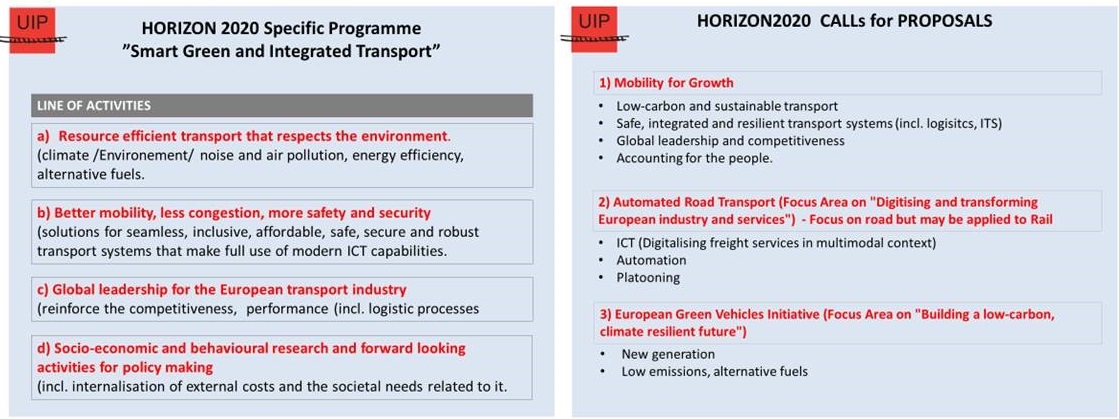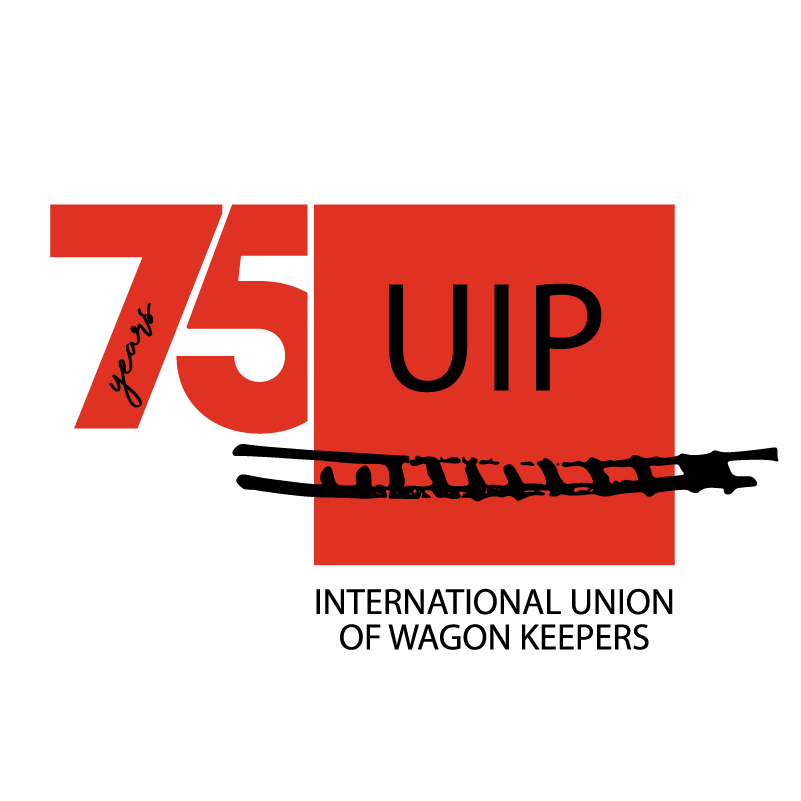Research & Innovation
Research & Innovation should respond to the needs of the customers
In order to achieve a Single European Area, the rail sector has to be more innovative and open-minded towards solutions that support not only technology improvement, but also innovative approaches to operations, maintenance and logistic services. This requires both a short-term and a long-term vision, strategic planning and delivery in order to address existing challenges and barriers in our daily business. Therefore, research activities at EU level are to support:
- Ambitious goals to achieve interoperability and maintain safety levels around Europe
- Stronger role of the railways as a more active mode in a multimodal transport
- Increasing demand for the rail sector to perform better and achieve a more competitive and efficient transport for passengers and freight.
The vision of the rail sector for the needs of the future railway systemis set out in the document RAIL 2050 VISION published by the European Rail Research Advisory Council (ERRAC), of which UIP is a member. It setsthe ambition that the R&I framework program must address. Research Activities for the rail freight sector are supported by the current Horizon 2020 EU framework Programme and Shift2Rail Joint Undertaking. Within Horizon 2020, the Rail related activities are supported under Specific Programme “Smart, Green and Intelligent Transport”.

(Source: UIP)
The Shift2Rail Joint Undertaking
The Shift2Rail (S2R) Joint Undertaking (JU) is a private-public Partnership founded in 2014 in order to manage the entire budget for rail R&I under Horizon 2020. It brings together EU and Sector funding to support innovative technology solutions to increase the efficiency and performance of rail transport and complete the development of the Single European railway Area (SERA). Through the S2R Master Plan and annual work plans,the JU is contributing to the realisation of the ERRAC 2050 Vision and the European Commission 2011 White Paper on Transport, for examplebyaiming to reduce the infrastructure and rolling stock lifecycle costs by 50%. The S2R founding members are the European Union plus eight representatives of the rail industry: Alstom, Ansaldo STS, Bombardier, Construcciones y Auxiliar de Ferrocarriles (CAF), Siemens and Thales, Network Rail and Trafikverket. To allow for a full representation of the sector (including RUs, other rail actors, SMEs, and research organisations), 19 associate members have also been elected.


UIP is a member of the S2R User Requirements / Implementation and Deployment working group (URID-WG) of IP5 whose role is to provide guidelines, present its needs and define requirements for innovation in freight transport and rail freight vehicles. The Shift2Rail JU manages the entire budget of at least €920 million for the period 2014-2020 for rail only research. Under the co-financing structure, the EU’s commitment amounts to a maximum of €450 million, while the rail sector Members contribution is around €470 million. With that in mind, there are two types of calls:
- Founding Members(CFM) calls reserved for Shift2Rail Joint Undertaking members (incl. associated members)
- Open calls (OC) are available to companies, universities, research institutes and others who are not Shift2Rail members
The S2R is organised around five key “Innovation Programmes” (IP) where IP 5 has a specific focus on freight services and freight rolling stock design. IP 5 aims at developing a new generation of high capacity trains which are cost-efficient and improve technologies for sustainable and attractive European rail freight by looking at wagon design, brake and telematics, autonomous rail freight systems and new freight propulsion concepts. Up to now, the following promising projects have already been co-financed:
- ARCC– conducts rail freight automation research activities (Duration: from 01/09/2016 to 31/08/2019)
- DYNAFREIGHT– looks into innovative technical solutions for improved trains dynamics and operation of longer freight trains through the development of the next freight propulsion concepts (Duration: from 01/11/2016 to 30/06/2018)
- FR8HUB – make rail freight more sustainable and attractive, by increasing operation reliability by 10%, by reducing life cycle costs by 10% and by reducing noise by 5% through the deployment of Condition Based Maintenance and Intelligent video gate technologies (Duration: from 01/09/2017 to 31/08/2020)
- FR8RAIL – aimed at a 10 % reduction in the cost of freight transport measured by tonnes per Km, through Condition Based and Predictive Maintenance, Telematics & Electrification (Duration: from 01/09/2016 to 31/08/2019)
- INNOWAG– provides research on monitoring and predictive maintenance solutions on lightweight wagons, complementary to FR8Rail project (Duration: from 01/11/2016 to 30/04/2019
The latest call for proposals, which was open from January till April 2018, committed to financing projects open to members worth EUR 155.3m. It covered the following topics:
- Technology demonstrators for competitive intelligent rail freight
- Radio communication and simulation of train dynamics for Distributed Power Systems within long trains
- Advanced Signalling, Automation and Communication System
The 9th Framework Programme for 2021-27 – Horizon Europe
The Commission’s proposal envisages an increased budget of €97.6 bn, compared to €80 bn under Horizon 2020. Under the Pillar ‘Global Challenges and Industrial Competitiveness’, which has a budget of EUR 52.7bn, Mobility is grouped together with climate and energy in Cluster 4 whose budget is set at EUR 15bn. UIP has advocated for EUR 19.1bn in the latest feedback round to the proposal as the proposed budget would not represent an increase compared to the combined budget dedicated to these three areas under Horizon 2020. Especially when considering the transport sector’s contribution to Europe’s economic priorities, as well as the investment intensiveness of the rail sector, the overall budget increase of 27% for Horizon Europe should also be reflected in the budget share of Cluster 4. Furthermore, UIP underlined the need for clearly earmarking the funds for rail and other transport modes to ensure funding continuity. The proposal is currently being discussed by the European legislators, the European Parliament and Council.
While the overall financial framework of Horizon Europe for 2021‐27 remains to be decided, the draft legislation outlines 12 possible areas in which institutionalised European Partnerships could be set up. The Commission in cooperation with the Member States has identified ‘Transforming Europe’s rail system’ as a candidate for such a partnership. The proposed partnership will build on the results achieved by the Shift to Rail (S2R) Joint Undertaking (JU) under Horizon 2020, and will focus on a limited number of priorities designed to address emerging challenges, such as:
- Automation, digitalisation and decarbonisation
- The need to increase the attractiveness of rail freight by increasing the cost-efficiency and reliability of EU rail services
- Integration into digital multimodal mobility and logistics chains
Significance to UIP and our members
It is important for our members to be in the know on the latest innovation that shapes the future of the railways and freight transport. As investors in rolling stock, the Keepers are best positioned to provide guidelines, and define requirements when it comes to smart and innovative wagons. As a representative body UIP acts as a coordinator and facilitator for its members to become involved and participate in projects related to noise, optimisation of rolling stock, and rail freight performance in general. UIP is a member of the European Rail Research Council (ERRAC), the European Technology Platform for Rail where strategies on research and development are defined by the railway sector. UIP is also a member of the Users Group of Innovation Programme 5 (IP5) of Shift2Rail, whose role is to provide recommendations, present its needs and define requirements for innovation in freight transport and rail freight vehicles.
UIP welcomes that rail was included in the list of potential institutionalised European Partnerships as it is a crucial R&I area for the successful delivery on Union priorities jobs and growth, the Digital Single Market, the Energy Union and climate action. With rail standing out as the most carbon-conscious transport mode, the Modal shift to rail is an opportunity to reduce the impact of mobility on the environment and human health. Therefore, it is important that the 9th Framework Programme continues to fund rail research projects fostering the rail sectors competitiveness through new innovative solutions.
We believe that the strength of the S2R JU lies in its ability to overcome market fragmentation by bundling the expertise of major rail stakeholders, partners and research institutions, as well as its ability to ensure sufficient financial resources as a public-private partnership and improve the direct leverage of investments.This is why UIP appreciates the efforts of fostering a new generation of European Partnerships to ensure synergies between R&I and the Connecting Europe Facility which shall continue to support the roll-out and deployment of innovative technologies in the rail sector. In addition, we would like to draw special attention to the following projects which will help the rail freight sector to deliver on the White Paper objectives:
- Intelligent wagon and predictive maintenance with a focus on cargo condition monitoring, wagon design, predictive maintenance
- Freight Automation on lines and in yards with a focus on automated guided vehicles, automation of disposition processes in marshalling yards
- Development of functional requirements for sustainable and attractive rail freight with a focus on KPIs for freight, wagon specifications for condition-based maintenance and real time yard management
- Market deployment of innovative solutions like digital automatic couplers
Consequently, to enable the advancement and market uptake of the results of Shift2Rail on these projects, we express towards the EU legislators that it is of tantamount importance that a Shift2Rail follow-up programme is established in the form of a Joint Undertaking. Doing so will also ensure coherence with the scope and depth of the rail research programme as described in the ERRAC 2050 vision paper. Another important point UIP voices is that the admission process to this Shift2Rail follow-up Joint Undertaking should be simplified and structured in such a way as to make it easier for small- and medium-sized companies, as well as consortia thereof to join.

